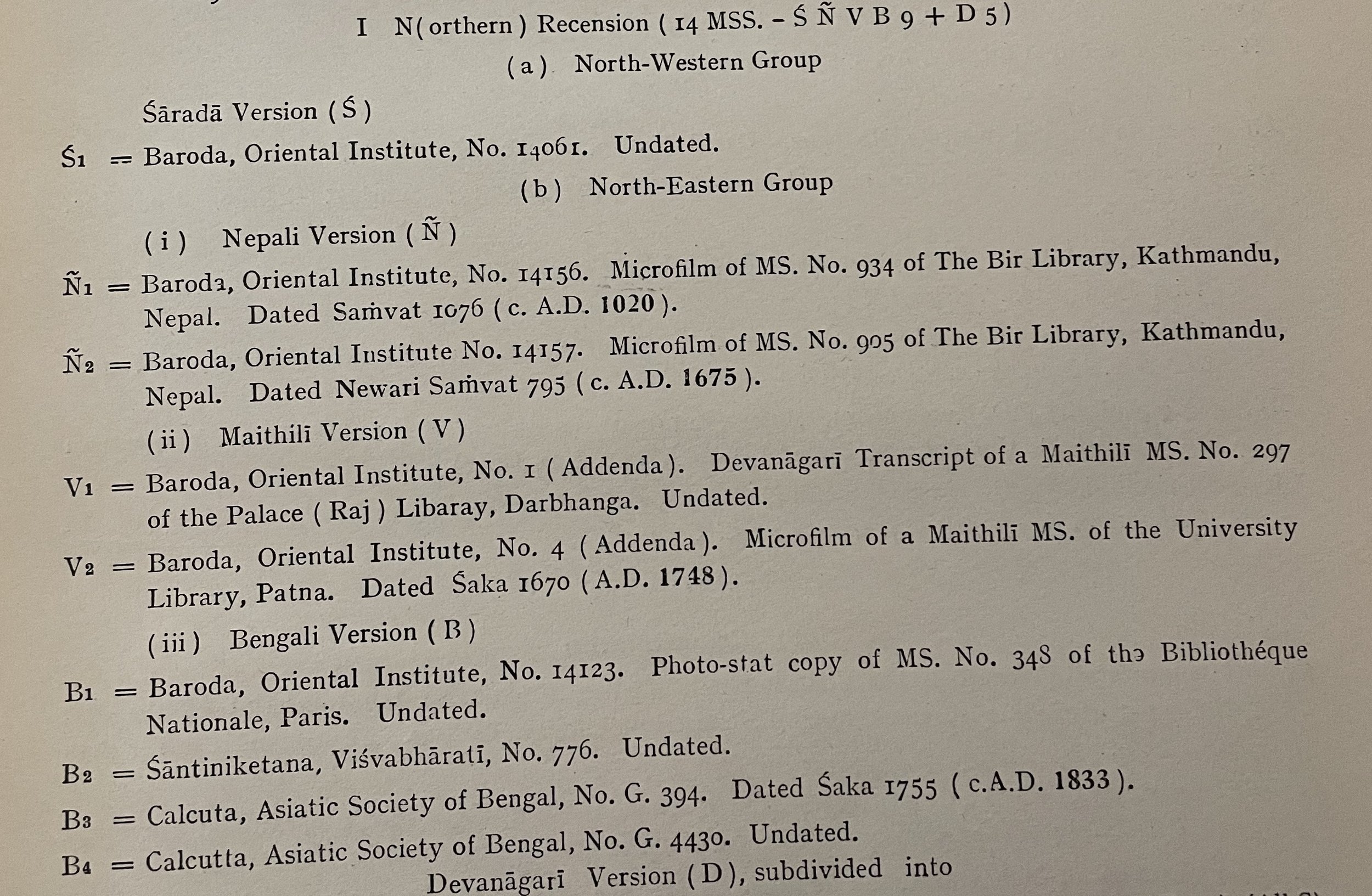What Does a Sanskritist Do?
Sometimes I translate inscriptions or texts. Sometimes I publish articles. Here is a closer look at the process behind identifying and translating an inscription on an illustrated manuscript page.
The Project
As part of my translation work for the Asian Art Museum of San Francisco, I translated the inscription from this illustrated manuscript of the Rāmāyaṇa (c. 1605). The image, depicts the demon Rāvaṇa in battle with the king of vultures, Jaṭayus. This folio page was produced in a North Indian painting workshop under Mughal patronage. The painting was originally housed in the Datia Palace Collection (in Madhya Pradesh, India). The painting is now in the collection of the Cleveland Museum of Art.
My translation of the inscription is published in Sonya Rhie Quintanilla, Mughal Paintings: Art and Stories: The Cleveland Museum of Art (London: Giles, 2016), 326–27.
Missing Pieces & Identification
The manuscript page is missing significant portions of text at the margins and in other damaged areas. In order to try and fill in these gaps, I will need some help from other copies of the Rāmāyaṇa.
I start with a quick textual database search to see if I can match the verses on the folio page with verses from a printed edition of Vālmīki’s Sanskrit Rāmāyaṇa.
Using BBEdit, I search my Rāmāyaṇa etexts for the first word in the first full verse on the folio page: “sapakṣayor.” I get a result: 3.49.4—Book 3, the Araṇyakāṇḍa (Book of the Forest), chapter 49, verse 4. Something is off though. Not all the words match up. It’s time to go the library. I need a copy of The Critical Edition of the Araṇyakāṇḍa.
The Critical Edition
The Critical Edition of the Sanskrit Rāmāyaṇa, published by the Oriental Institute Baroda, compares 29 manuscripts of the Sanskrit Rāmāyaṇa, written in 8 different scripts including Śāradā, Newari, Maithilī, Bengali, Devanāgarī, Telugu, Grantha, and Malayālam.
As the Rāmāyaṇa was transmitted and circulated across regions through manuscript culture, variations in content emerged. The 29 manuscripts compared in the critical edition can be grouped according to shared textual features and content. These groupings are called “Recensions.” There are two main Recensions: Northern and Southern. These main Recensions can be further subdivided into Northeastern, Northwestern, and Southern.
Manuscript Identification
Thanks to the Critical Edition, I am able to identify that the inscription on the folio page follows the textual variations from the Northeastern Recension. This is immensely helpful!
How did I identify this and why is it helpful? keep on reading to find out!
Working with a Manuscript
The manuscript page starts with an incomplete word “..dhrarākṣayor atha” and an incomplete verse. Thanks to my earlier database search, though I know where to look in the Critical Edition: 3.49.4.
The critical edition gives every variation of every word of every verse through a comparison of the 29 different manuscripts. This gives me a good idea of what chunks of text might be missing and what similar words or ideas would have been conveyed there. Based on this, I can fill in the missing chunks of the verse (marked in red), which allows me to give a nice, complete translation.
[तद्बभूवाद्भुतं युद्धं गृ]ध्रराक्षसयोरथ।
सपक्षयोर्भृशं तत्र महापर्वतायो[रिव]।।
[tad babhūvādbhutaṃ yuddhaṃ gṛ]dhrarākṣasayor atha ।
sapakṣayor bhṛśaṃ tatra mahāparvatayo[r iva] ।।
Now [an extraordinary fight ensued] there
between [the vulture] and the rākṣasa,
quite violent, [as if] between two great, winged mountains.
I notice that most often, the word choice in the manuscript page matches up with the Northeastern Recension of the Rāmāyaṇa text!!!
Big Gaps
I have some pretty chunks of text missing from the folio. Several of these chunks correspond to verses that can only be found in the Northeastern Recension of the Rāmāyaṇa (like the verse highlighted in purple). Good thing there is a critical edition of the Rāmāyaṇa that allows me to compare different versions of the text!!!
Sometimes, though, I can’t find any textual parallels and I have to use meter to make an educated guess about what word is cut off. Should this be a long syllable? or a short syllable to fit the meter? What words do I know that 1) have the right length of syllable 2) use the existing letters that I can see 3) give the right contextual meaning?
Manuscript Culture & The Northeastern Recension
Several manuscripts belong to the Northeastern Recension grouping. The variants in one of these in particular closely matches the inscription from the illustrated folio page: a Devanāgarī-script manuscript from Hoshiarpur, East Punjab. The Hoshiarpur manuscript is dated to 1829. It is currently housed at the VVR Institute, Sādhu Āśrama (No. 3018).
The confusion between व (va) and ब (ba) seen in the painting’s inscription is also evident in the Hoshiarpur manuscript.
The illustrated manuscript page that I am translating is dated to circa 1595-1605 CE, but I can place it in broader patterns of reading and circulation through the nineteenth-century by noting the similarities to the Hoshiarpur manuscript of the Rāmāyaṇa. It is exciting to see how local, regional communities of readers and scribal communities leave their mark on texts through manuscript culture!
In Print
After all of this research, the translation is ready to polish and publish.










